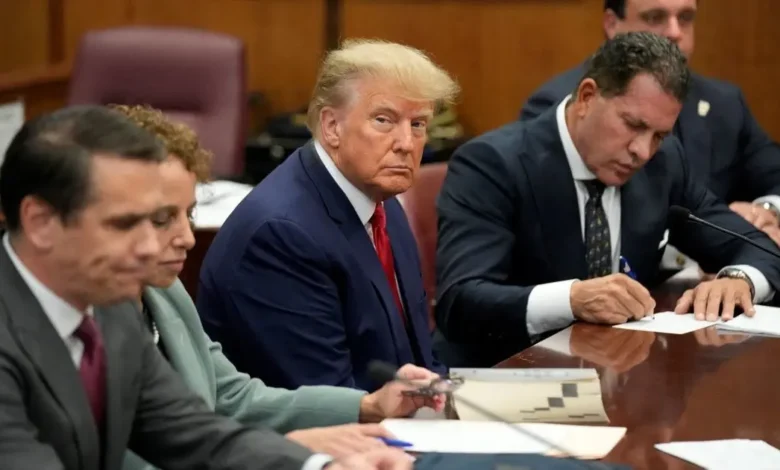Trump’s legal team requests trial delay amid massive document review challenge

Lawyers for Donald Trump asked a federal judge in Washington to push back until years after the election a trial in Washington on charges that the former president conspired to overturn the results of the 2020 election.
The suggested April 2026 date is a dramatic counter to the Justice Department’s recommendation last week that the trial should begin Jan. 2, 2024. The question is ultimately up to US District Judge Tanya Chutkan, who is expected to set at least a tentative trial date during an Aug. 28 court hearing.
In a filing, Trump’s lawyers say the years-long delay is necessary both because of the unprecedented nature of the case and the “massive” amount of information – 11.5 million pages – that they have to review. They said they would have to review about 100,000 pages per day in order to meet the Justice Department’s proposed trial date.
“If we were to print and stack 11.5 million pages of documents, with no gap between pages, at 200 pages per inch, the result would be a tower of paper stretching nearly 5,000 feet into the sky. That is taller than the Washington Monument, stacked on top of itself eight times, with nearly a million pages to spare,” the defense lawyers wrote.
Trump’s 2024 calendar was already expected to be packed with court dates and campaign appearances.
He is confronting both a presidential primary season and four criminal cases in four different cities. Next March 25, he is set for trial in a New York state case related to an alleged hush money payment to a porn actor. Prosecutors in Fulton County, Georgia, where Trump was charged earlier this week with trying to undo the results of that state’s presidential election, have proposed a March 4 trial date – though that is likely to slip given the complexity of a sprawling racketeering case that involves 19 defendants.
And a federal judge in Florida has set a May 20 trial date on charges that Trump illegally hoarded classified documents and concealed them from investigators.










